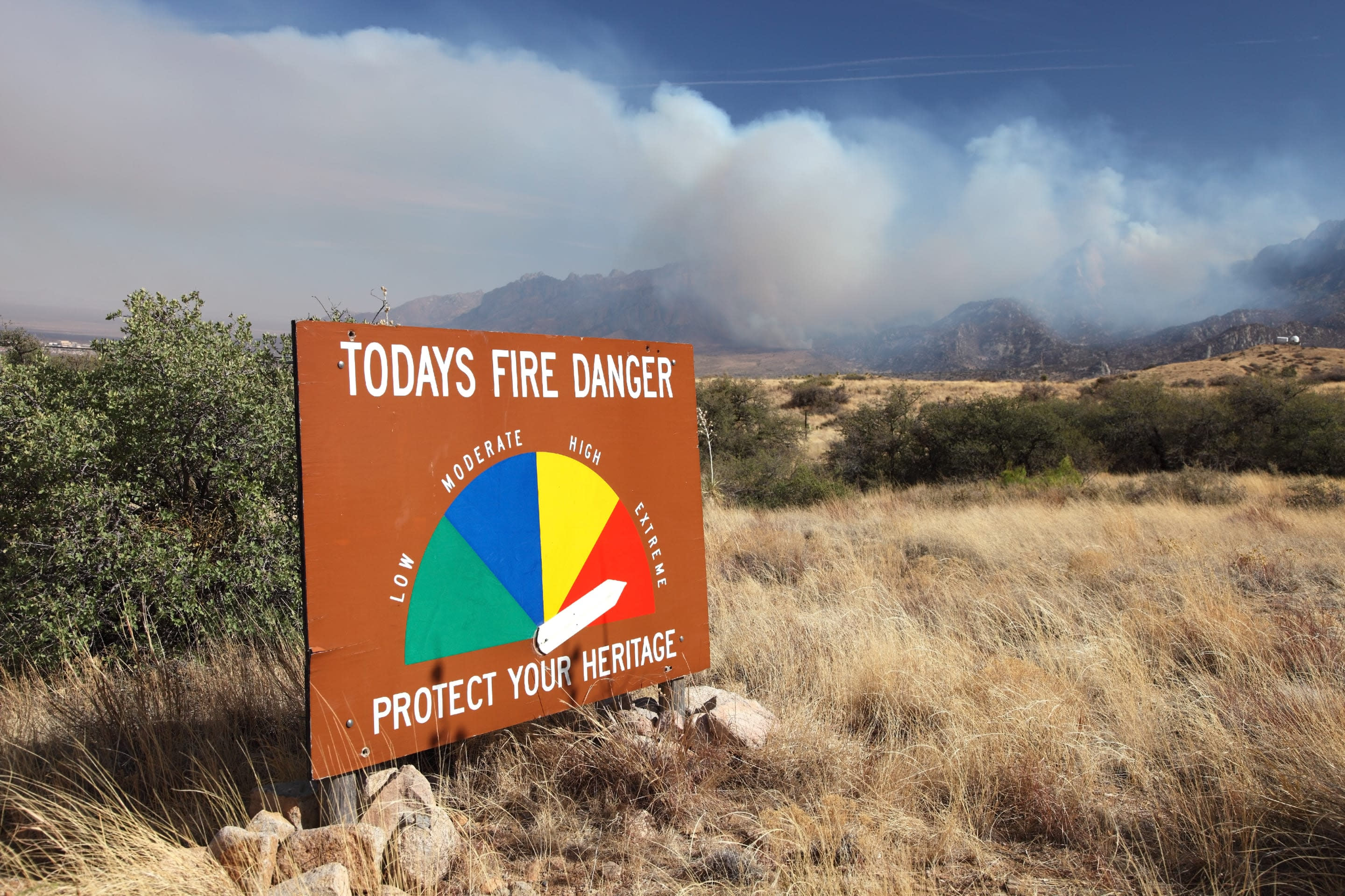
Investigation launched into U.S. Forest Service after prescribed fire became New Mexico’s largest wildfire
What do you think of the investigation into the Forest Service’s practices?
Written by Jamie Epstein, Countable News
What’s the story?
- The federal Government Accountability Office (GAO) is launching an investigation into the U.S. Forest Service after a controlled, prescribed burn became the largest wildfire recorded in New Mexico’s history. The Hermits Peak Fire is still not 100% contained and has burned more than 340,000 acres, mainly in the Santa Fe National Forest. The GAO says they plan to look into the Forest Service’s controlled burn policies.
- In late May, the U.S. Forest Service (USFS) Chief Randy Moore paused all prescribed fires on national forest system lands for a 90-day review due to the extreme wildfire risk conditions.
- Fire and forestry ecologists are concerned that the 90-day halt will only worsen the risk of wildfires as warm, dry weather continues this summer, and argue that the agency’s approach does not align with the realities of climate change.
- Biologist and professor Matthew Hurteau from the University of New Mexico says the agency’s plans are for a climate that no longer exists, and believes the USFS policies are failing to adapt to climate change goals:
“We’ve seen pretty substantial changes to the climatic conditions, particularly here in the Southwest, but across much of the Western U.S. And we need to address that by developing new tools that account for the fact that we’ve got these persistent drying trends in a much warmer and much drier atmosphere.”
- The USFS recently released an internal review of the New Mexico burn, which highlights how fire officials lacked an understanding of the severity of the dry conditions and long-term drought.
- Dozens of forest experts from the Association for Fire Ecology are urging Chief Moore to reverse the pause on prescribed burns. In an open letter to Moore, the ecologists argued that the pause will only make fire conditions worse.
Why are scientists concerned?
- Climate change is worsening each year, creating drier conditions, extreme weather, and megadrought, which in turn causes forest vegetation to dry out, making more fuel for fires. Fuel levels in forests are now at “crisis proportions" according to the USFS.
- The agency says that at least 234 million acres of forest are at high risk of dangerous wildfires. Experts believe the climate crisis is more urgent than the Forest Service’s current plans and policies account for.
- Forest ecologists believe controlled burns are an essential part of reducing disastrous wildfire risk. This comes after nearly a century of federal wildfire suppression policy, which proved to cause more destructive fires. Scientists are now hoping to undo the exceptionally dry, flammable conditions that the suppression policy created.
- Hurteau notes that peer-reviewed research on the issue shows that scaling-up prescribed burns is a key way to decrease wildfire risk without relying on suppression tactics. Experts hope to see the USFS make a shift away from wildfire suppression and toward its stated climate goals.
Prescribed fires vs. Fire suppression
- Prescribed fires are planned burns to a specific area and used as a tactic to prevent catastrophic fires. A scientific plan is curated for each fire in advance to determine the objective, fuel, size, and environmental conditions of the region.
- Prescribed fires help to eliminate biomass that accumulates in the forest which would act as fuel for an uncontrolled fire. Experts say these fires are becoming more crucial as climate change creates increasingly dry conditions and risks for wildfires.
- Prescribed fires are risky, as the escaped fire in New Mexico shows. However, fewer than 1% escape the prescribed area, and the majority of them are contained quickly, without spread and excessive damage.
- Fire suppression entails preventing fires and containing them as soon as possible. In the early-1900s, the USFS created a fire suppression policy that prevented all controlled and prescribed fires. The no-burn policy resulted in a paradox, causing the accumulation of fuel on forest floors, and more severe wildfires. A paradigm shift was introduced in the late 1960s as the ecological benefits of wildfires were better understood.
Forest Service’s reforms discussed
- Some politicians are imploring the USFS to increase wildfire mitigation by hiring more firefighters and raising pay. Sen. Ron Wyden (D-OR) recently reprimanded the secretaries of Interior and Agriculture for not hiring more firefighters and boosting pay during a staffing crisis that’s occurring in these climate conditions. Wyden called upon the agencies to answer questions regarding their lack of wildfire mitigation strategy despite new federal funding. Wyden stated:
“Your departments received this much-needed support. Now, more than six months after being given this new flexibility, we are past time for action.”
- There are calls for the USFS to create a professional corps dedicated to prescribed fires, including training academies and recruiting.
- Rep. Teresa Leger Fernandez (D-NM) says she eagerly awaits the GAO’s investigation into the USFS regarding their flawed burn plan. Fernandez, whose district was devastated by the fire, says the GAO probe will examine policies and procedures to come up with recommendations that lawmakers may turn into action.
What do you think of the investigation into the Forest Service’s practices?
(Photo credit: iStock/DenisTangneyJr)